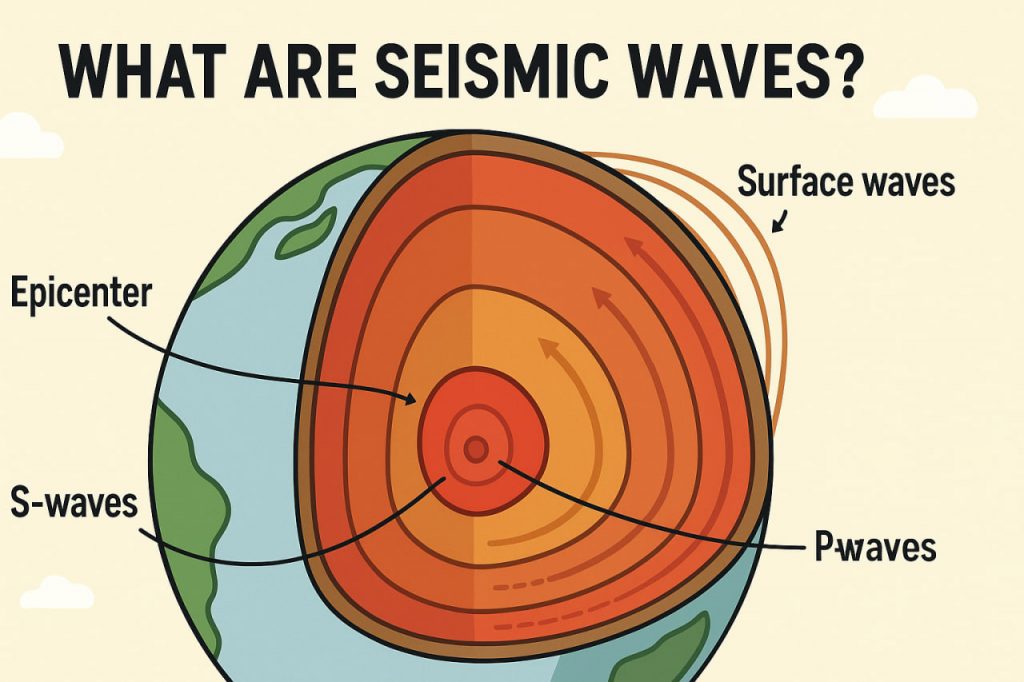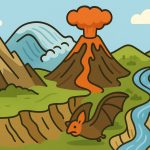Seismic waves are vibrations that travel through Earth, usually generated by earthquakes, volcanic eruptions, explosions, or other strong disturbances. They carry energy away from the source of the event and can be recorded by instruments called seismometers. Studying seismic waves helps scientists understand both earthquakes and the structure of Earth’s interior.
How Seismic Waves Are Generated
When stress builds up in Earth’s crust, rocks eventually break or slip along faults, releasing stored energy. This energy radiates outward as seismic waves. Volcanic activity, landslides, and even artificial explosions like nuclear tests can also generate seismic waves.
Types of Seismic Waves
There are two main categories of seismic waves:
- Body waves: travel through Earth’s interior.
- P-waves (Primary): compressional waves that move fastest and arrive first.
- S-waves (Secondary): shear waves that move slower and cannot travel through liquids.
- Surface waves: travel along Earth’s surface.
- Love waves: move side-to-side, causing strong ground shaking.
- Rayleigh waves: roll like ocean waves, creating both vertical and horizontal movement.
Seismic Waves and Earth’s Interior
By studying how seismic waves travel and bend, scientists have discovered Earth’s layered structure: crust, mantle, outer core, and inner core. For example, S-waves cannot pass through the liquid outer core, while P-waves slow down when entering it.
Seismic Waves in Earthquake Studies
Seismic waves are crucial for determining an earthquake’s epicenter, depth, and magnitude. The time difference between P-wave and S-wave arrivals at seismometer stations helps pinpoint where the quake began. Surface waves often cause the most damage during large earthquakes.
Applications Beyond Earthquakes
Seismic waves are also used in oil and gas exploration, studying volcanoes, monitoring nuclear tests, and even probing other planets with landers equipped with seismometers. For example, NASA’s InSight mission measured seismic activity on Mars, revealing details about its interior.
Conclusion
Seismic waves are the key to understanding earthquakes and Earth’s hidden layers. By analyzing their behavior, scientists can map the planet’s interior, monitor volcanic and tectonic activity, and develop systems to reduce earthquake risks.
Glossary
- Seismic waves – vibrations traveling through Earth caused by earthquakes or explosions.
- Seismometer – instrument that records seismic waves.
- P-wave – primary, fast compressional wave.
- S-wave – secondary, slower shear wave.
- Love wave – surface wave with horizontal ground motion.
- Rayleigh wave – rolling surface wave with vertical and horizontal movement.


